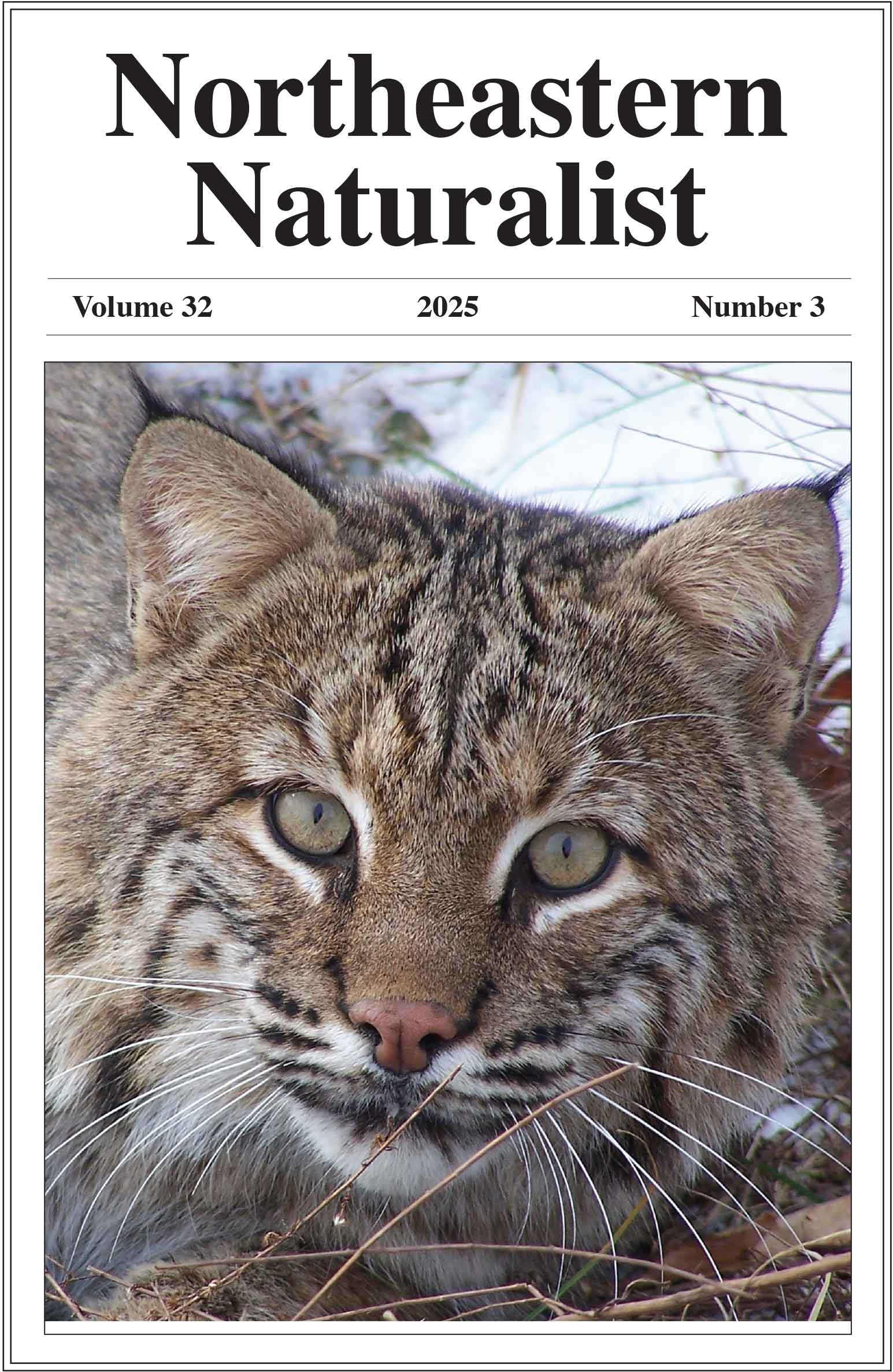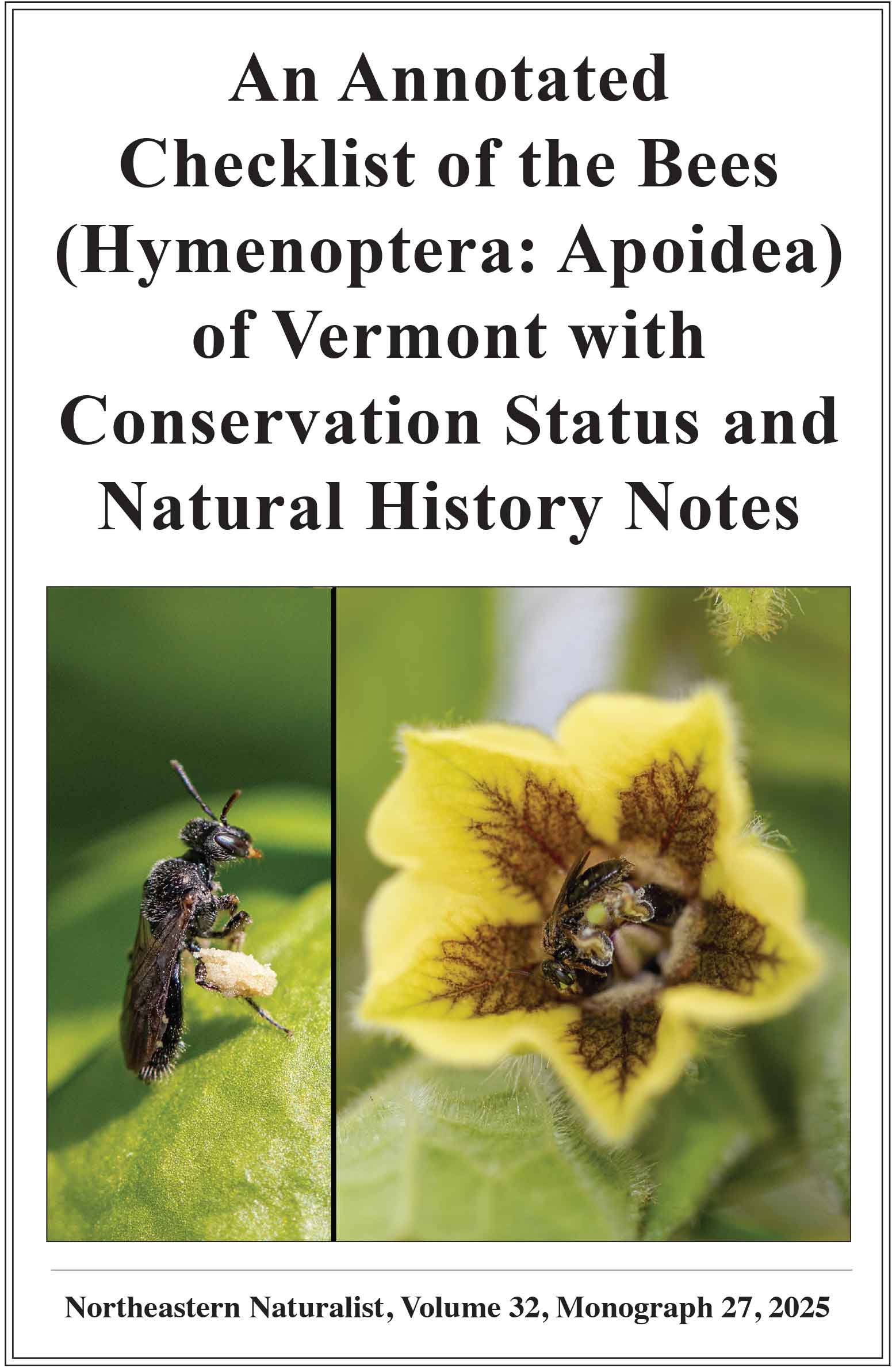Movement and Home Range of the Coahuila Box Turtle (Terrapene coahuila) in the Cuatro Ciénegas Valley, Mexico
Ernesto Becerra1, Norma Manríquez-Moran2, Craig B. Stanford3, Sara Valenzuela-Ceballos1, Miguel Borja1, and Gamaliel Castañeda-Gaytán1,*
1Laboratorio de Herpetología, Facultad de Ciencias Biológicas, Universidad Juárez del Estado de Durango, Avenida Universidad s/n Fracc. Filadelfia, Gómez Palacio, Durango, México. 2Laboratorio de Sistemática Molecular, Centro de Investigaciones Biológicas, Universidad Autónoma del Estado de Hidalgo, Carretera Pachuca-Tulancingo km 4.5, Mineral de la Reforma, Hidalgo, Mexico. 3Department of Biological Sciences, University of Southern California, Los Angeles, CA 91030. *Corresponding author.
Northeastern Naturalist, Volume 31, Special Issue 12: T118–T135
First published early online: 28 September 2024
Abstract
Turtle movement patterns are influenced by foraging, searching for mates, shelter, and thermoregulating. Movements can be influenced by intrinsic characteristics of the organisms, such as sex and age, but also by extrinsic factors such as seasonal changes, availability of food, and the need to find microhabitats for long inactive periods such as estivation and brumation. Terrapene coahuila (Coahuila Box Turtle) is the only aquatic species of Terrapene and inhabits the wetlands of Cuatro Ciénegas, Coahuila, in northern Mexico. This study describes the movement patterns and the home range of adult Coahuila Box Turtles, and the influence of pronounced seasonality in the wetland system of the Cuatro Ciénegas Valley on the species’ behavioral ecology. The average daily linear distances traveled by adults during the wet–warm, wet–cold, and dry–warm seasons were 36.76, 21.38, and 32.18 m, respectively. The daily distance travelled was not statistically different between males and females or among seasons. The average number of movements was affected by seasonal conditions, with a marked reduction in the wet–cold season. The average home ranges for wet–warm, wet–cold, and dry–warm seasons were 0.91, 0.60, and 0.25 ha, respectively, using the fixed kernel method (FK), and 4.68, 1.48, and 5.09 ha, respectively, using the minimum convex polygon method (MCP). There were no significant differences in home-range size between sexes or among seasons using FK but there were using MCP (the latter being smaller during the wet–cold season). Seasonal differences in movement patterns may reflect seasonal changes in the habitat as well as other landscape attributes that might be involved in the spatial ecology of the species.
![]() Download Full-text pdf (Accessible only to subscribers. To subscribe click here.)
Download Full-text pdf (Accessible only to subscribers. To subscribe click here.)
Access Journal Content
Open access browsing of table of contents and abstract pages. Full text pdfs available for download for subscribers.
Issue-in-Progress: Vol. 32(4) ... early view
Check out NENA's latest monograph and Special Issue:













 The Northeastern Naturalist is a peer-reviewed journal that covers all aspects of natural history within northeastern North America. We welcome research articles, summary review papers, and observational notes.
The Northeastern Naturalist is a peer-reviewed journal that covers all aspects of natural history within northeastern North America. We welcome research articles, summary review papers, and observational notes.